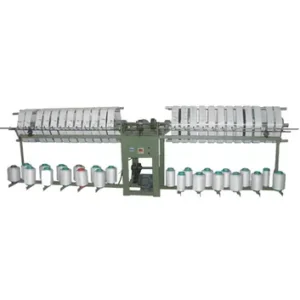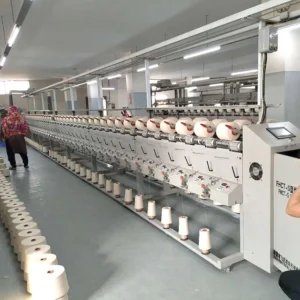The textile dyeing industry plays a vital role in fashion and fabric production.
However, it is also a significant contributor to environmental pollution due to the large quantities of chemical waste generated during the dyeing process.
Minimizing this waste is essential not only for environmental sustainability but also for improving the efficiency and cost-effectiveness of textile production.
This article explores effective strategies for reducing chemical waste in textile dyeing, emphasizing the importance of sustainable practices.
What Are the Sources of Chemical Waste in Textile Dyeing?
Types of Chemicals Used
The dyeing process in textiles relies on a variety of chemicals, including dyes, mordants, and auxiliaries.
Dyes are the primary substances that impart color to fabrics, while mordants help fix these dyes to the fibers.
Auxiliaries, such as surfactants and leveling agents, are used to improve dye uptake and uniformity. Understanding the specific types of chemicals used in each dyeing process is vital for identifying potential waste sources.
Each chemical can contribute to environmental pollution if not managed properly, highlighting the need for careful selection and usage to minimize waste.
Wastewater Generation
A significant portion of chemical waste in the textile dyeing industry comes from the wastewater generated during the dyeing process.
This wastewater often contains a cocktail of harmful substances, including residual dyes, heavy metals, and various chemicals used during dyeing and finishing stages.
The presence of these pollutants makes it crucial to treat wastewater before disposal, requiring additional resources and processes.
The volume of wastewater generated can be substantial, leading to increased treatment costs and environmental concerns if not properly managed. Reducing wastewater generation is therefore a key focus for minimizing overall chemical waste.
Inefficient Processes
Inefficient dyeing processes can lead to excessive use of chemicals, resulting in higher waste levels.
Factors such as incorrect dyeing temperatures, improper pH levels, and inadequate mixing can contribute to inefficiencies, causing more chemicals to be used than necessary.
These inefficiencies not only increase operational costs but also exacerbate environmental impacts. Recognizing these inefficiencies is crucial for waste reduction, as streamlining processes can lead to better chemical management.
Implementing best practices in dyeing can significantly decrease chemical consumption and reduce waste generation.
And More:
- Reducing Water Usage in Textile Dyeing Processes
- Innovative Eco-Dyeing Methods for Sustainable Fashion
How Can Sustainable Practices Reduce Chemical Waste?
Eco-Friendly Dyes
Using eco-friendly dyes, such as natural dyes or low-impact synthetic dyes, can significantly reduce chemical waste.
Natural dyes, sourced from plants, insects, or minerals, often require fewer harmful chemicals in their production and application. Low-impact synthetic dyes are designed to have a reduced environmental footprint, minimizing toxic byproducts.
These alternatives not only decrease the volume of chemicals used but also improve the overall sustainability of the dyeing process.
Embracing eco-friendly dyes promotes a healthier environment and aligns with growing consumer demand for sustainable products.
Waterless Dyeing Technologies
Innovative waterless dyeing technologies, such as supercritical CO2 dyeing, eliminate the need for large volumes of water, thereby reducing wastewater and associated chemical waste.
This technology uses carbon dioxide in a supercritical state, which acts as a solvent to carry dyes directly into the fabric.
The process requires significantly less energy and generates minimal waste compared to traditional dyeing methods.
By adopting waterless dyeing techniques, textile manufacturers can achieve vibrant colors without the environmental burden associated with water usage and wastewater treatment, making it a compelling option for sustainable practices.
Process Optimization
Optimizing dyeing processes through advanced techniques and technologies can lead to more efficient chemical use.
This includes employing precise dosing of dyes to ensure that only the necessary amount is used for each application.
Improved application methods, such as continuous dyeing or using digital printing, can also enhance efficiency and reduce excess chemical use.
By investing in process optimization, manufacturers can not only minimize waste but also enhance product quality and consistency.
Streamlining operations ultimately contributes to a more sustainable and profitable dyeing process.
What Role Does Technology Play in Waste Reduction?
Automated Dosing Systems
Automated dosing systems play a crucial role in ensuring accurate and consistent application of dyes in the textile dyeing process.
These systems utilize advanced technology to measure and dispense precise amounts of chemicals required for each batch.
This level of precision minimizes the risk of excess dye usage, which not only reduces waste but also enhances the quality of the final product.
Automated systems can adapt to varying fabric types and dye requirements, ensuring that each application is optimized for efficiency.
The result is a more streamlined dyeing process that contributes to significant reductions in chemical waste.
Digital Fabric Printing
Digital fabric printing represents a revolutionary shift in how textiles are dyed, allowing for precise color application and drastically reducing the amount of dye needed.
Unlike traditional dyeing methods, which often require large quantities of dye and water, digital printing applies color directly onto the fabric using inkjet technology.
This method significantly minimizes chemical waste, as it uses only what is necessary for each design, leading to less leftover dye and fewer resources expended.
Digital fabric printing not only enhances design flexibility and customization but also supports sustainability goals by reducing the environmental impact associated with conventional dyeing techniques.
Data Analytics
Leveraging data analytics can profoundly enhance the ability of textile manufacturers to monitor and optimize their dyeing processes.
Collecting and analyzing data on chemical usage, dyeing times, and process efficiencies, manufacturers can identify waste patterns and areas for improvement.
This analytical approach allows for informed decision-making, enabling companies to adjust their processes in real-time to minimize waste.
Implementing data analytics fosters a culture of continuous improvement, as manufacturers can track progress over time and make necessary changes to enhance sustainability and operational efficiency.
Also Read:
- The Role of AI in Reducing Waste in Textile Manufacturing
- How to Achieve Zero-Waste Production in Textile Factories
How Can Companies Implement Waste Reduction Strategies?
Employee Training
Training employees on sustainable practices is essential for fostering a culture of environmental responsibility within textile manufacturing.
Educating staff about the importance of minimizing waste and the specific techniques available for achieving this can lead to significant improvements in chemical management.
Employees who understand the impact of their actions are more likely to adopt eco-friendly techniques, such as proper dyeing practices and efficient resource use.
Regular training sessions can also keep staff updated on new technologies and sustainable methods, ensuring that the entire workforce is aligned with the company’s sustainability goals.
Supplier Collaboration
Collaborating with suppliers to source sustainable materials and chemicals enhances the overall sustainability of the dyeing process.
Strong partnerships with suppliers can lead to better resource management, as companies can access eco-friendly dyes and materials that minimize environmental impact.
Working closely with suppliers also facilitates the sharing of best practices and innovations, leading to improved efficiency and reduced waste across the supply chain.
Establishing a collaborative relationship ensures that both manufacturers and suppliers are committed to sustainability, ultimately benefiting the environment and the bottom line.
Regular Audits
Conducting regular audits of dyeing processes is a proactive approach that helps identify areas for improvement in waste management.
These audits involve a thorough assessment of chemical usage, wastewater generation, and overall process efficiency.
By systematically reviewing operations, companies can pinpoint inefficiencies and implement changes that effectively reduce chemical waste.
Regular audits not only promote accountability but also encourage continuous improvement, as manufacturers can track their progress over time and adapt their strategies to achieve better sustainability outcomes.
What Are the Economic Benefits of Reducing Chemical Waste?
Cost Savings
Minimizing chemical waste can lead to substantial cost savings across various aspects of textile production.
Efficient use of resources significantly reduces the amounts spent on purchasing chemicals, as companies only need to buy what is necessary for their operations.
Additionally, lowering waste generation decreases disposal and treatment costs, which can be a significant financial burden for manufacturers.
These savings accumulate over time, contributing to lower overall production costs and improving the company’s bottom line.
As a result, investing in waste reduction strategies not only benefits the environment but also enhances financial performance.
Improved Brand Reputation
Companies that prioritize sustainability and actively work to reduce chemical waste often enjoy an enhanced brand reputation among consumers.
A commitment to environmentally friendly practices resonates with today’s increasingly conscious consumers, who prefer to support brands that align with their values.
Positive public perception can lead to increased customer loyalty and attract new clients, particularly those who are environmentally aware.
This improved brand image can drive sales and create a competitive advantage in the market, as consumers are more likely to choose products from companies that demonstrate responsibility toward sustainability.
Compliance with Regulations
Reducing chemical waste is essential for ensuring compliance with environmental regulations, which are becoming increasingly stringent worldwide.
Companies that proactively minimize waste are less likely to face fines or legal issues associated with non-compliance.
Adhering to regulations not only protects the company from potential penalties but also ensures smoother operations and a more sustainable business model.
Compliance fosters a culture of responsibility and ethical practice within the organization, enhancing long-term viability and stability in an evolving regulatory landscape.
What Are the Challenges in Reducing Chemical Waste?
Initial Investment Costs
Implementing new technologies and sustainable practices to reduce chemical waste may require significant upfront investments.
Companies often face the challenge of allocating budget resources for new equipment, training, and process modifications.
Weighing these initial costs against the long-term benefits can be difficult, particularly for smaller manufacturers with tighter budgets.
However, understanding that these investments can yield substantial savings and efficiency improvements over time is crucial for making informed decisions.
A clear cost-benefit analysis can help companies justify the initial expenditures necessary for waste reduction initiatives.
Resistance to Change
Resistance to change is a common challenge when implementing waste reduction strategies in textile manufacturing.
Employees and management may be hesitant to alter established processes, especially if they perceive new practices as disruptive or unnecessary.
Effective communication about the benefits of waste reduction is essential to overcome this resistance.
Providing training and demonstrating the positive impacts of new methods can help foster a culture of innovation and openness to change.
Engaging employees in the decision-making process and addressing their concerns can also facilitate smoother transitions to more sustainable practices.
Keeping Up with Regulations
Staying updated with evolving environmental regulations can be a significant challenge for companies in the textile industry.
The regulatory landscape is constantly changing, with new laws and standards being introduced to address environmental concerns.
Companies must invest in training and resources to ensure compliance with these regulations, which can be time-consuming and costly.
Regularly monitoring regulatory updates and proactively adapting practices to meet new requirements is essential for avoiding compliance issues.
Building a dedicated team or partnering with external experts can help streamline this process and ensure that companies remain compliant while focusing on waste reduction.
And More:
- How to Optimize Fabric Cutting to Minimize Waste
- How to Train Staff for Sustainable Practices in Textile Manufacturing
Conclusion
Minimizing chemical waste in textile dyeing is essential for environmental sustainability and economic efficiency.
By understanding the sources of waste, adopting sustainable practices, and leveraging technology, textile manufacturers can significantly reduce their environmental impact.
Commitment to these strategies not only benefits the planet but also enhances brand reputation and profitability. As the industry evolves, prioritizing waste reduction will remain a key factor in the future of textile dyeing.











